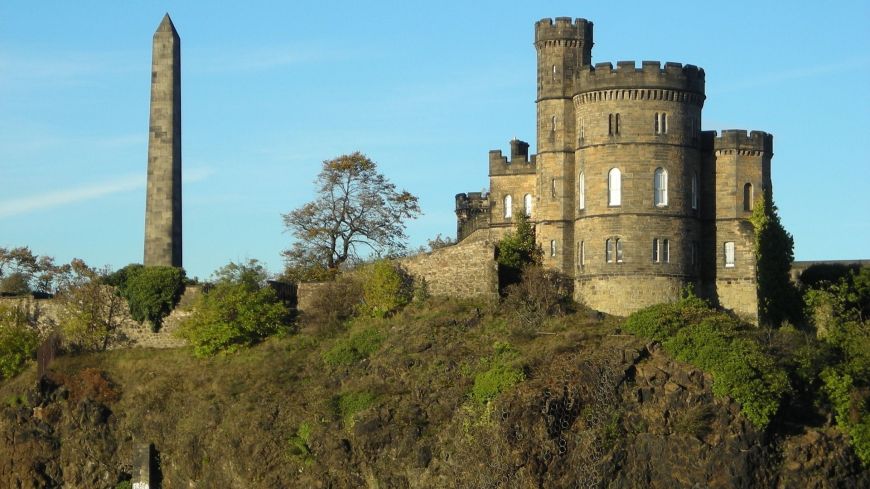
Old Calton Burial Ground (aka Old Calton Cemetry) is a historic Edinburgh site, on the steep South side of Calton Hill. It was the final resting ground of many eminent Edinburgh citizens.
Dominating the burial ground is the Monument to the Political Martyrs, a 90 foot tall obelisk made of ashlar sandstone blocks (completed 1845). It was erected to Thomas Muir and four other "Political Martyrs" who campaigned for Parliamentary reform. They were charged with sedition in 1793/94 and were shipped off to the new penal colony in New South Wales.
You also can't miss the circular drum, Roman-inspired mausoleum to Scottish Enlightenment philosopher David Hume (1711-1776), which was designed by his friend Robert Adam. Twenty feet in diameter and thirty feet high, the monument was erected in 1778 and reckoned to be one of the finest of its kind.
There are many fine examples of early 18th and 19th century monuments and memorials, in a mixture of neo-classical and gothic revival.
Another draw is George E. Bisset’s American Civil War Memorial, erected in 1893 to commemorate five Scottish American Soldiers who took part in the American Civil War. It is the first life-size statue of Abraham Lincoln erected in Europe. The bronze statue of the 16th POTUS stands, while a freed slave lies on battle flags at the base, with out-stretched hand. The plinth has the the words "suffrage" and "emancipation" inscribed on it.
Other monuments to look out for are the free-standing stone to Thomas Gray, the grave of sculptor Sir John Steell and Robert Burn, who designed the Nelson Monument further up Calton Hill.
The graveyard is overlooked by the Governor's House, the last remnant of the Calton jail that was removed to make way for St Andrew's House.
The Burial Ground is probably the oldest development in the Calton area, dating back to 1718 when Lord Balmerino granted The Society of the Incorporated Trades of Calton a license to create the Burial Ground. It was likely previously a sheep fold, used for grazing and also for quarrying. It continued to be used for sheep shearing and grazing til all beasts were banned from the ground in 1760.
The Burial Ground was expanded in 1767, but as the New Town grew, it was divided by the construction of Waterloo Place and Regent Bridge in 1816-19. Some of the graves were moved to a fresh 3-acre site, New Calton Burial Ground, to the south of the new Regent Terrace.
The Old Calton Burial Ground was managed by the Society of Incorporated Trades of Calton until 1888, when, filled up, it passed to the City of Edinburgh Council.
Entry to the Burial Ground is free.

